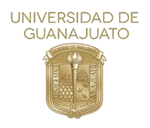 Guanajuato, Gto., November 5, 2019.- A group of more than 500 researchers from 13 countries participate in the Dark Energy Spectroscopic Instrument (DESI) project, which is focused on deciphering the mystery of dark energy and dark matter, which make up approximately 70 and 25 percent, of the Universe today. Three researchers from the University of Guanajuato (UG) participate in this great international collaboration that has been established for this purpose.
Guanajuato, Gto., November 5, 2019.- A group of more than 500 researchers from 13 countries participate in the Dark Energy Spectroscopic Instrument (DESI) project, which is focused on deciphering the mystery of dark energy and dark matter, which make up approximately 70 and 25 percent, of the Universe today. Three researchers from the University of Guanajuato (UG) participate in this great international collaboration that has been established for this purpose.
This is Dr. Luis Arturo Ureña López, Dr. Gustavo Niz Quevedo, both research professors in the Department of Physics, and Dr. Alma Xóchitl González Morales, who collaborates in the same Department through a Conacyt Master Class. In addition, this group of UG academics will be supported by graduate students who will support data analysis, computer simulations and instrument calibration.
Dr. Luis Ureña explained the purpose of the DESI project which is to make a three-dimensional map of nearly 40 million galaxies and quasars, this means, it will be the largest 3D map of the Universe.
AUDIO 1
The analysis of the data obtained during the five years of observation will yield fundamental information on dark energy, which constitutes approximately 68 percent of the Universe, and although it remains an unknown to the scientific community, it is known it accelerates the expansion of the Universe.
"According to what Einstein established in his theory of general relativity, the Universe will expand depending on the type of matter it contains. With this study we could decipher what is made of, beyond the ordinary matter of which we are made," he says.
In this regard, Dr. Gustavo Niz detailed that with DESI you will have five thousand optical fibers managed by microscopic robots, which will point out these optical fibers that collect information about the Universe.
"We're going to repeat this for 5 years - every night - every 20 minutes we're going to move the telescope to target objects that have previously been selected," such as very bright galaxies (near Earth), red light galaxies, and most of the sample will be focused on galaxies of emission lines, which are quite tenuous and it takes a very powerful team to study them.
AUDIO 2
We will also see quasars that are like protogalaxies that are believed to have a black hole at the very active center, which emits strong radiation. So, they're "like big headlights that we see in the back of the universe," the researcher details.
He added that this international collaboration derives from the BOSS (Baryon Oscillation Spectroscopic Survey) project and its eBOSS extension, but in this one the placement of optical fibers on metal plates was a manual process "now the difference is that we want to do it all in automatic and see many more objects in a single field of view."
For that you need a large telescope "and there were few in the world that could be used". The Nicholas U. Mayall telescope at Kitt Peak National Observatory, located in Tucson, Arizona, was chosen.
The previous map, which was made through the BOSS/eBOSS project "collected about 2 million objects, we will collect more than 30 million", argues Dr. Alma Xóchitl González Morales, professor at the UG through a Conacyt Master Class.
AUDIO 3
This growth is thanks to the technology that was developed for this instrument, to automate the process of placing optical fibers. From the end of October, DESI began taking data with these optical fibers, and it is expected that after a period of calibration and testing, it will begin mapping galaxies and quasars.
Around 40 Mexican scientists, and 75 institutions from different parts of the world, will collaborate in DESI. In our country, financial support is through the National Council of Science and Technology (Conacyt).
Photo gallery






